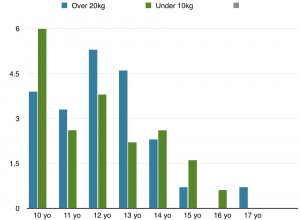Updated November 29, 2020
We all know that different dog breeds can have very different lifespans. Here are the best figures we have from three recent English studies. Please read this first to help you understand the figures.
Problems with breed lifespan data

- The figures quoted are median lifespans. Juvenile deaths are included which lower the median. For example, a six-year-old dog having already survived that long will therefore expect a higher median lifespan than these figures suggest for all dogs from puppyhood. The ages should still be valid as a comparison between breeds.
- Studies use self-reported data and often get response rates of only one in four. This will tend to create reporting bias where people are more likely to send back data for atypical results such as early deaths. The data below doesn’t include breeds with very low numbers or response rates.
- These studies use old data. All three studies use data for dogs who died before the study date and therefore didn’t have access to many recent advances in veterinary care. This may mean modern lifespans are generally older but it may also explain the idea (myth?) that large dogs die sooner. Look at this recent data from our clinic on 800 living patients. If you can see any difference between large and small dog lifespans you’re doing better than me. Read why I think old dogs now live longer than they used to.
Dog Breed Lifespan Chart
Dog breed longevity in the table below comes from three UK studies, which are the most recent and probably most similar to Australian dogs. View each dog breed here.
| DOG BREED | ADAMS(2010) | MICHELL(1999) | O’NEILL(2013) |
|---|---|---|---|
| Afghan Hound | 11 y , 11 m | 12 | – |
| Airedale Terrier | 10 y , 9 m | 11.2 | – |
| Akita | 9 y , 11 m | – | – |
| Alaskan Malamute | 10 v , 8 m | – | – |
| American Cocker Spaniel | 10 y , 4 m | 12.5 | – |
| Australian Cattle Dog | 11 y , 8 m | – | – |
| Australian Shepherd | 9 y | – | – |
| Australian Silky Terrier | 14 y , 3 m | – | – |
| Basenji | 13 y , 7 m | – | – |
| Basset Hound | 11 y , 4 m | 12.8 | – |
| Beagle | 12 y , 8 m | 13.3 | – |
| Bearded Collie | 13 y , 6 m | 12.3 | 13.7 |
| Bedlington Terrier | 13 y , 5 m | 14.3 | – |
| Belgian Shepherd | 12 y , 6 m | – | – |
| Bernese Mountain Dog | 8 y | 7 | – |
| Bichon Frise | 12 y , 11 m | – | 12.7 |
| Border Collie | 12 y , 3 m | 13 | 13.5 |
| Border Terrier | 14 y | 13.8 | 12 |
| Borzoi | 9 y , 1 m | – | – |
| Boston Terrier | 10 y , 11 m | – | – |
| Bouvier Des Flandres | 11 y , 4 m | – | – |
| Boxer | 10 y , 3 m | 10.4 | 10 |
| Briard | 11 y , 2 m | – | – |
| British Bulldog | 6 y , 3 m | 6.7 | 8.4 |
| Brittany | 12 y , 11 m | – | – |
| Bull Terrier | 10 y | 12.9 | 11.2 |
| Bullmastiff | 7 y , 6 m | 8.6 | – |
| Cairn Terrier | 14 y | 13.2 | 13.4 |
| Cavalier King Charles Spaniel | 11 y , 5 m | 10.7 | 9.9 |
| Chihuahua | 13 | 7.1 | |
| Chinese Crested | 10 y , 1 m | – | – |
| Chow Chow | – | 13.5 | – |
| Cocker Spaniel | 11 y , 2 m | 11.8 | 11.5 |
| Cross Breed | – | 13.2 | 13.1 |
| Dachshund | 12 y , 8 m | 12.2 | – |
| Dalmatian | 12 y , 6 m | 13 | 13.3 |
| Deerhound | 9.5 | – | |
| Dobermann | 10 y , 6 m | 9.8 | 9.2 |
| Dogue de Bordeaux | 3 y, 10 m* | – | 5.5 |
| English Setter | 11 y , 7 m | 11.2 | – |
| English Springer Spaniel | 12 y | 13 | 13.3 |
| Finnish Lapphund | 7 y , 4 m | – | – |
| Finnish Spitz | 11 y , 2 m | – | – |
| Flatcoated Retriever | 9 y , 10 m | 9.5 | – |
| Fox Terrier | 13 y , 2 m | – | – |
| French Bulldog | 9 y | – | – |
| German Shepherd Dog | – | 10.3 | 11 |
| German Shorthaired Pointer | – | 12.3 | – |
| German Pinscher | 11 y , 5 m | – | – |
| Golden Retriever | 12 y , 3 m | 12 | 12.5 |
| Gordon Setter | 11 y , 1 m | 11.3 | – |
| Great Dane | 6 y , 6 m | 8.4 | 6 |
| Greyhound | 9 y , 1 m | 13.2 | 10.8 |
| Griffon Bruxellois | 12 y | – | – |
| Havanese | 10 y, 3 m* | – | – |
| Hungarian Vizsla | – | 12.5 | – |
| Irish Setter | 12 y | 11.8 | – |
| Irish Wolfhound | 7 y | 6.2 | – |
| Italian Greyhound | 13 y , 6 m | – | – |
| Italian Spinone | 9 y | – | – |
| Jack Russell Terrier | – | 13.6 | 13.4 |
| Japanese Chin | 9 y , 3 m | – | – |
| Keeshond | 12 y , 2 m | – | – |
| King Charles Spaniel | – | 10.1 | 12 |
| Labrador Retriever | 12 y , 3 m | 12.6 | 12.5 |
| Lhasa Apso | 14 y , 4 m | 9 | 13 |
| Lowchen | 10 y | – | – |
| Lurcher | – | 12.6 | – |
| Maltese | 12 y , 3 m | – | – |
| Manchester Terrier | 12 y , 10 m | – | – |
| Maremma Sheepdog | 10 y | – | – |
| Miniature Dachshund | – | 14.4 | 13.5 |
| Miniature Poodle | 13 y , 11 m | 14.8 | 14.2 |
| Miniature Schnauzer | 12 y , 1 m | 8.5 | – |
| Newfoundland | 9 y , 8 m | – | – |
| Norfolk Terrier | – | 10 | – |
| Old English Sheepdog | 10 y , 9 m | 11.8 | – |
| Pekingese | 11 y , 5 m | 13.3 | – |
| Polish Lowland Sheepdog | 9 y , 7 m | – | – |
| Pomeranian | 9 y , 8 m | – | – |
| Portuguese Water Dog | 11 y , 5 m | – | – |
| Pug Dog | 11 y | – | – |
| Rhodesian Ridgeback | 11 y | 9.1 | – |
| Rottweiler | 8 y , 11 m | 9.8 | 8 |
| Rough Collie | – | 12.2 | 12 |
| Saluki | 12 y | – | – |
| Samoyed | 12 y , 6 m | 11 | – |
| Schipperke | 13 y | – | – |
| Scottish Terrier | 10 y , 3 m | 12 | 12 |
| Shetland Sheepdog | 12 y , 6 m | 13.3 | 12.5 |
| Shih Tzu | 13 y , 2 m | 13.4 | 13.3 |
| Siberian Husky | 12 y , 7 m | – | – |
| Smooth Collie | – | 13 | – |
| Soft Coated Wheaten Terrier | 12 y , 6 m | – | – |
| St Bernard | 7 | 4.1 | – |
| Staffordshire Bull Terrier | 12 y , 9 m | 10 | 10.7 |
| Standard Poodle | 12 y | 12 | – |
| Swedish Vallhund | 14 y , 2 m | – | – |
| Tibetan Spaniel | 14 y , 5 m | – | – |
| Tibetan Terrier | – | 14.3 | – |
| Toy Poodle | 14 y , 8 m | 14.4 | – |
| Weimaraner | 11 y , 2 m | 10 | 12.6 |
| Welsh Corgi Cardigan | 12 y , 2 m | 11.3* | – |
| Welsh Corgi Pembroke | 12 y , 3 m | 11.3* | – |
| Welsh Springer Spaniel | 12 y , 7 m | 11.5 | – |
| West Highland White Terrier | – | 12.8 | 13.5 |
| Whippet | 12 y , 10 m | 14.3 | – |
| Wire-haired Fox Terrier | – | 13 | – |
| Yorkshire Terrier | – | 12.8 | 13.0 |
*very low numbers, Corgis merged
Also, visit our page on the genetic diseases of different dog breeds.
Related: How to compare dog and human ages | How to give your dog a longer life
References & Comments
Adams, V. J., Evans, K. M., Sampson, J., & Wood, J. L. N. (2010). Methods and mortality results of a health survey of purebred dogs in the UK. Journal of Small Animal Practice, 51(10), 512-524. This study used data from questionnaires sent to members of breed clubs in the UK. Breeds were only included when the response rate was at least 15%. Cross breeds were not included.
Michell, A. R. “Longevity of British breeds of dog and its relationships with sex, size, cardiovascular variables and disease.” The Veterinary Record 145.22 (1999): 625-629. Data came from questionnaires sent to owners of UK dogs insured with a large pet insurance company.
O’Neill, D. G., Church, D. B., McGreevy, P. D., Thomson, P. C., & Brodbelt, D. C. (2013). Longevity and mortality of owned dogs in England. The Veterinary Journal, 198(3), 638-643. This study accessed UK veterinary clinic databases.
Have something to add? Comments (if open) will appear within 24 hours.
By Andrew Spanner BVSc(Hons) MVetStud, a vet in Adelaide, Australia. Meet his team here.

Thanks for the information, i am bookmarking it for future updates.
Where can I find a good small dog breeder in South Australia?
Hi Rita. Please visit our page on choosing a breeder. Good luck.